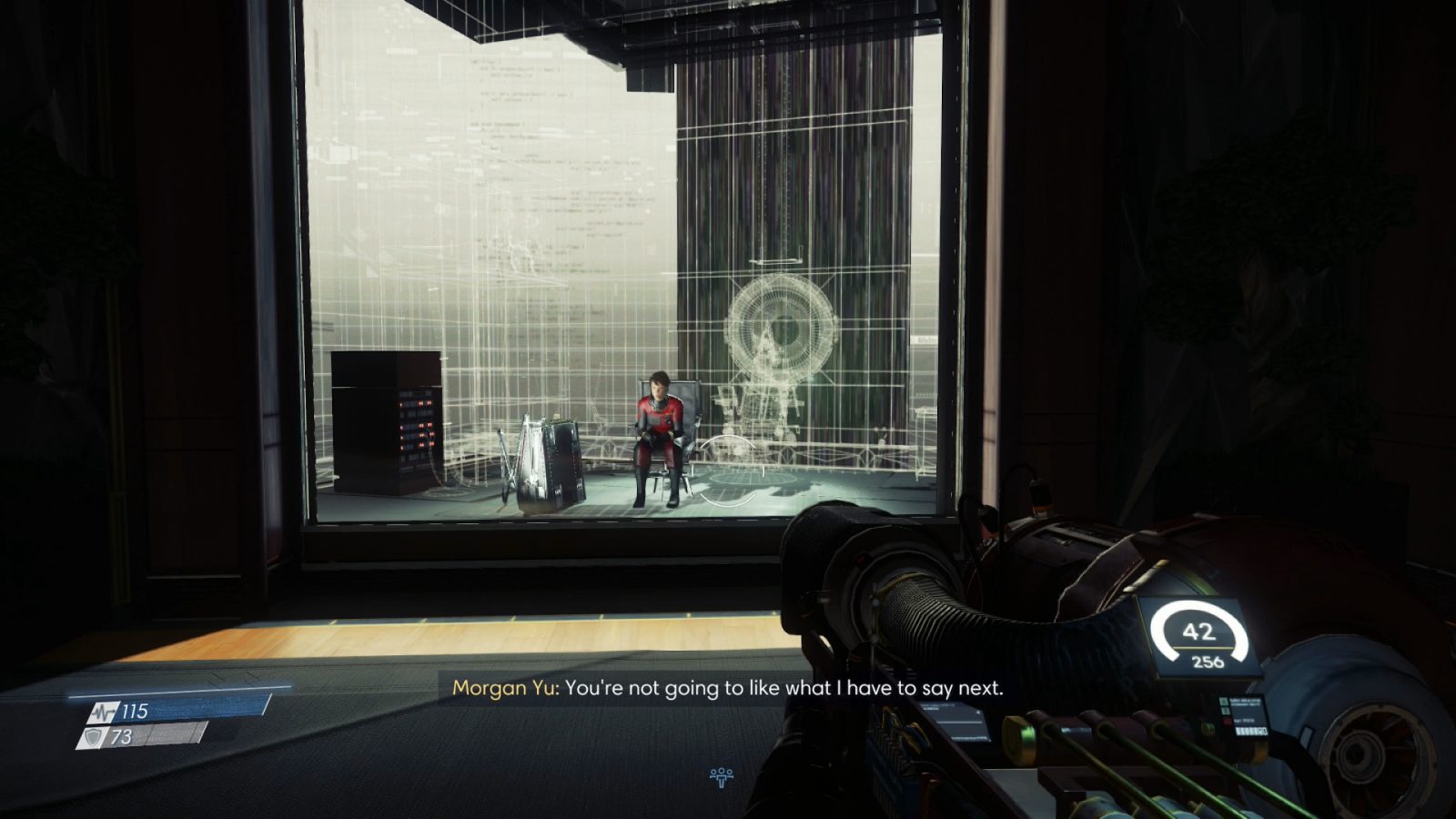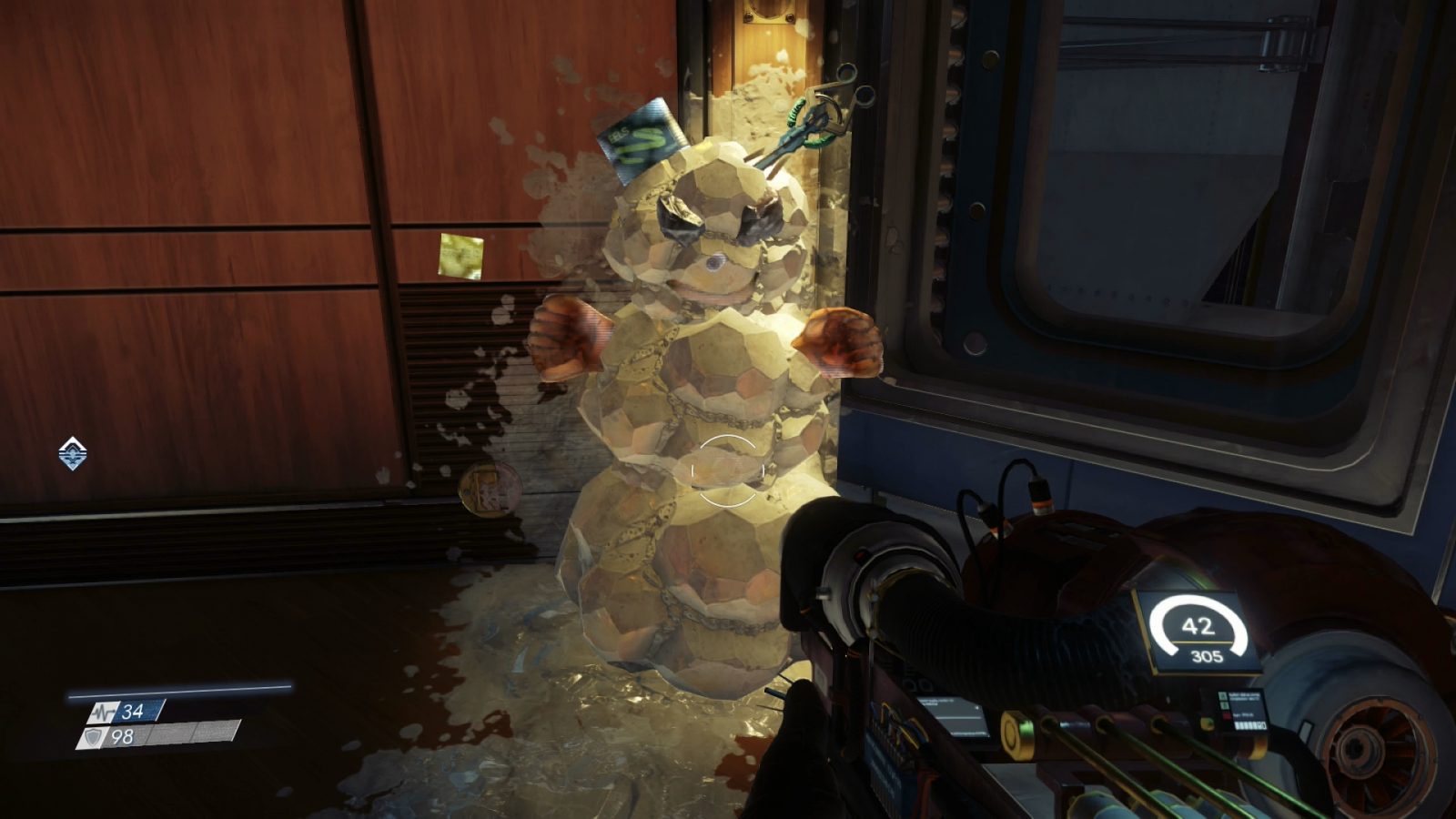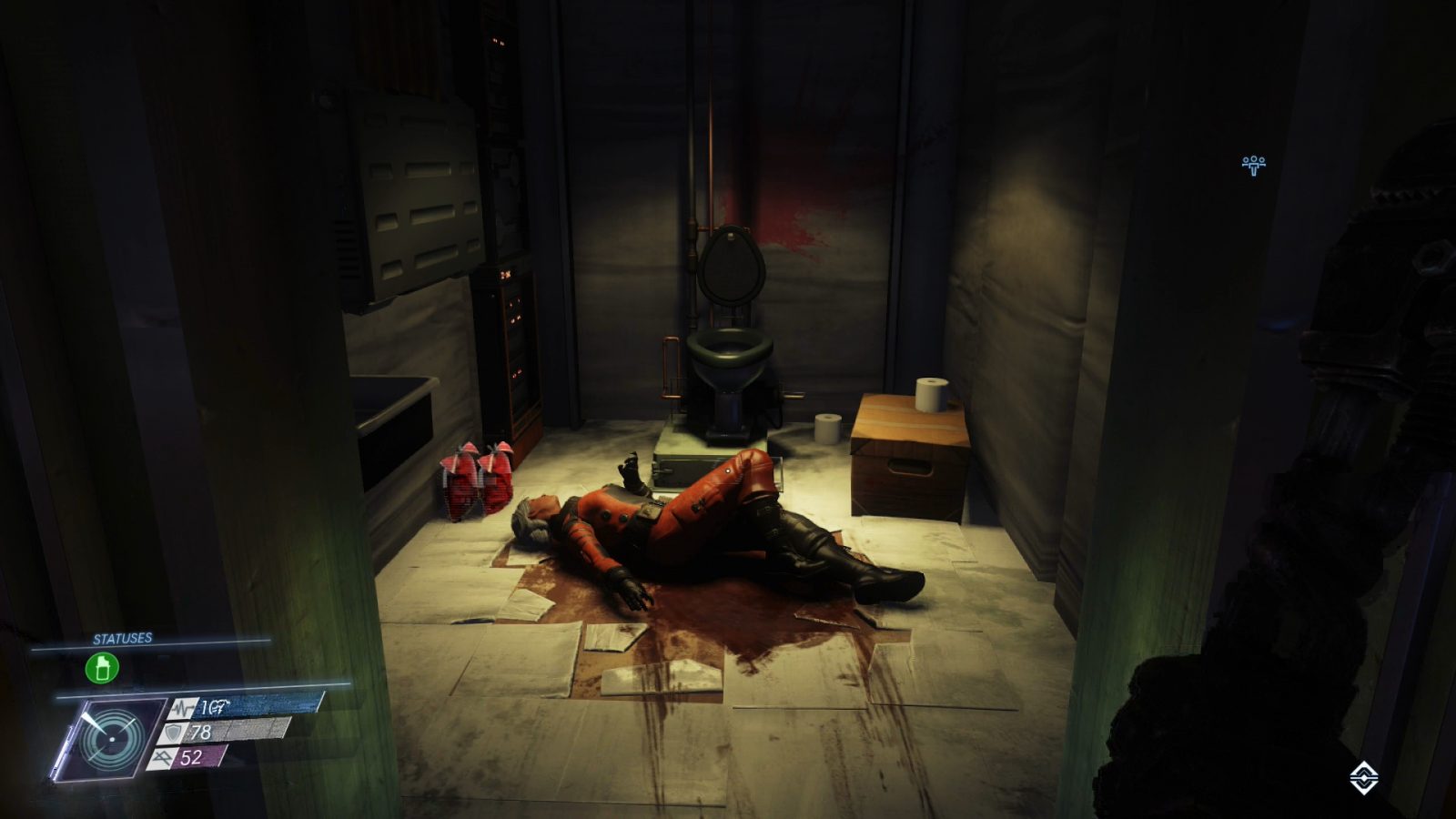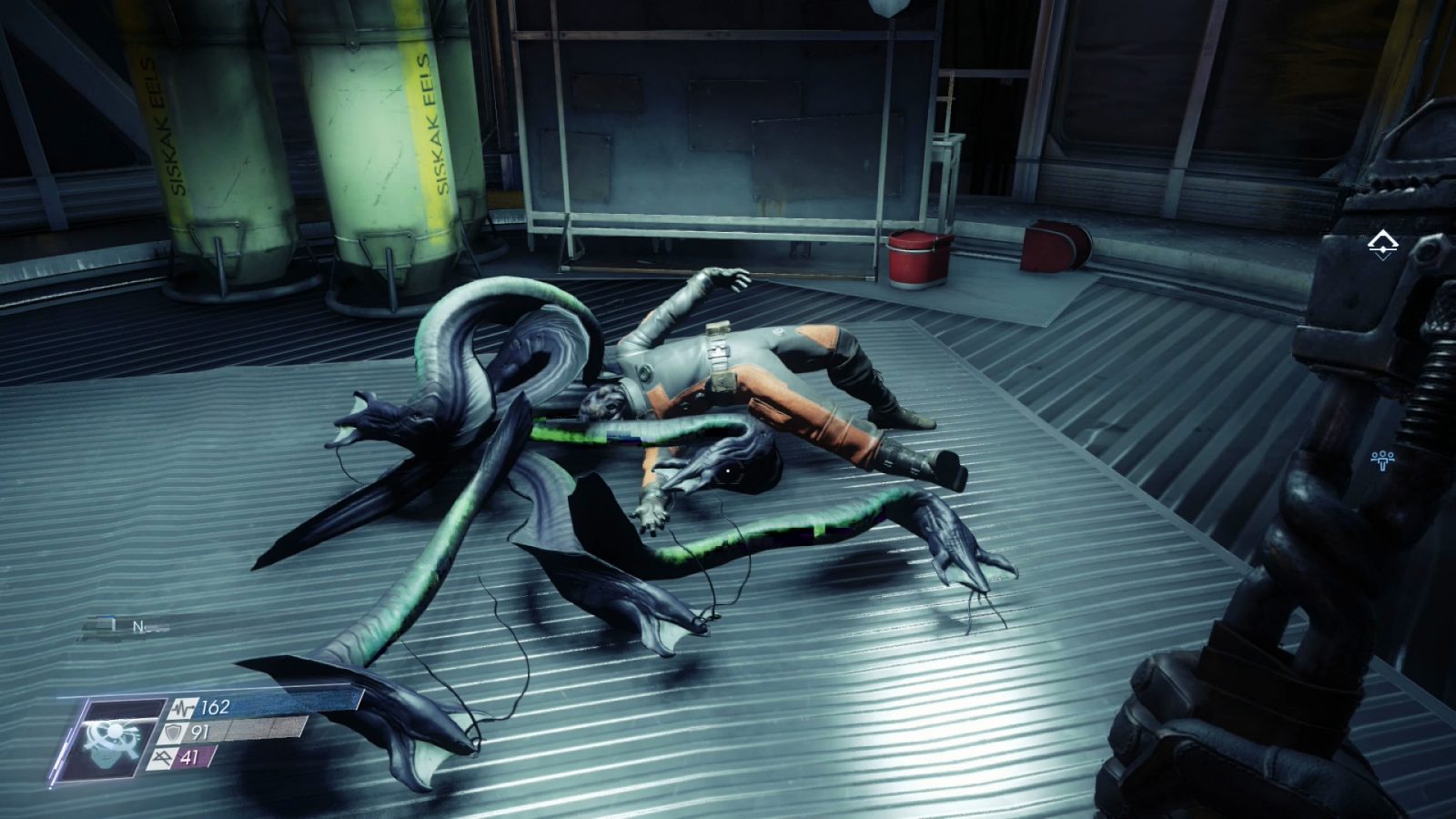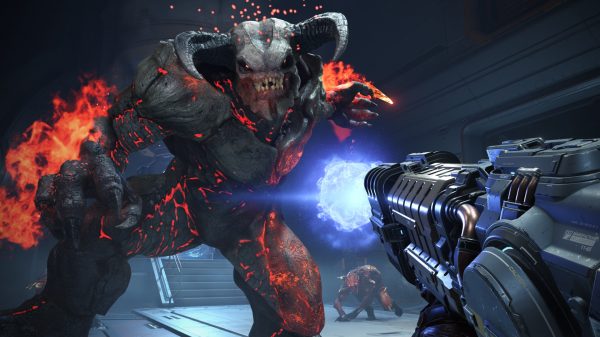It’s safe to say that the follow up to 2006’s Prey has had a storied past. Originally conceived as a sequel of sorts developed by Human Head Studios, development halted when new IP owners Bethesda cancelled the project due to the game failing to meet its quality standards in 2014. The game was re-debuted at E3 in 2016 by Bethesda, and unsurprisingly the end product is altogether unrecognisable compared to what was originally shown off when Prey 2 was first announced. So how has the franchise fared over the past 11 years of its tumultuous development? Interestingly, Prey bears few scars from its rollercoaster development and certainly isn’t a hacked-together Frankensteinian monstrosity as one might expect. In fact, there’s a great unity to its vision that is mostly endearing, but some wonky combat and lingering but prolific technical issues do hold it back.
More or less completely unrelated narrative-wise to its 2006 counterpart, Prey puts you in the shoes of either a male or female version of Morgan Yu, a scientist aboard a space installation known as Talos 1. Owned by a private mega corporation called TranStar, Talos 1 operates primarily to study and ultimately technologise an alien species known as the Typhon. It turns out these shadowy and malevolent black creatures from outer space are the key to a quantum leap in medical technology which results in the development and commercialisation of powerful implants known as neuromods. Essentially distilled from Typhon essence, neuromods are physically installed in the brains of a patient and give them access to superhuman abilities, although risks of memory loss and psychological issues are listed among their side effects.
The allure of becoming more human than human and making fat stacks of cash in the process seemingly outweighs the dangers of harnessing a mysterious but overtly hostile alien species in the eyes of the TranStar board of directors, who decide to charge ahead with their research into Typhon-based technology. The chances of any Typhon breaking containment was a million to one they said…until they do exactly that and wreak widespread havoc amongst the entire installation and relentlessly murder the majority of her crew. As Morgan Yu you must survive the horrors of Talos 1 in the aftermath of the Typhon revolt and discover the mysteries of your foggy past and the darker side of neuromod technology and research.
Prey’s story is probably one of its most endearing aspects, channelling high concept noir sci-fi classics like Bioshock and Deus Ex. The game excels in crafting a satisfying narrative not only through the main events that unfold, but also through its superb setting. Talos 1 is a character unto itself, with its sprawling architecture visibly scarred by recent conflict and escalating panic having many a story to tell if you’ve the patience to explore. Prior to the Typhon catastrophe the installation was host to scientists, engineers and support staff all living side by side, and there’s a great human aspect to many of stories and mysteries you uncover; desperate office romances, Dungeons and Dragons-inspired treasure hunts and nerf gun wars all give an impression that amongst the morally-grey science that is Talos 1’s bread and butter, there were also actual human beings living out the more ordinary aspects of their lives on the station.
Gameplay-wise Prey plays much like a hybrid of the aforementioned Deus Ex and Bioshock, mostly in a good way. Utilising a first-person perspective, Prey is at its best when you’re tensely exploring the vast spaces within the installation, scavenging precious supplies, hacking computer terminals to read private emails and discovering its varied environments. Every part of Talos 1 (and there are many) has a meaningful and specific purpose, and piecing together how things work (or worked) aboard the lavish ship is a constant source of wonder.
The game excels in crafting a satisfying narrative not only through the main events that unfold, but also through its superb setting. Talos 1 is a character unto itself, with its sprawling architecture visibly scarred by recent conflict and escalating panic having many a story to tell if you’ve the patience to explore
Prey features heavy RPG elements, mostly centring around the acquisition and installation of neuromods. Neuromods can provide passive boons such as bolstering your health, movement speed and weapon proficiency, but can also grant offensive and defensive abilities such as slowing time, teleporting out of harm’s way, hurling fire and electricity or of course transforming into a cup. Yes, that last one is real, and is actually a great way of finoogling your way into tight spaces and gaining entrance to locked areas. Door broken? Transform into a coffee mug and squeeze through the narrow bars in the windows. In terms of exploration there are a myriad of ways of both ingress and egress in most situations. Neuromods that grant boosts to hacking are definitely a good choice early doors to unlock many of the game’s secured areas and computer terminals, but searching high and low for keycards also has its place.
The RPG elements extend to combat, but it’s in this department that the game flounders a bit. Initially armed only with a wrench, aiming and actually connecting with enemies is a painful exercise, and often feels stilted and imprecise. It’s not until much later once you’ve acquired better neuromods and upgraded weaponry that it manages to open up, but even then, combat is never Prey’s forte. There’s also a lack of balance, with the opening sections of the game seeming unfairly difficult, with the odds skewed firmly against you as you pathetically swing your terribly inadequate wrench at much more powerful and nimble foes. Even when I obtained better weapons such as the silenced pistol or Q-beam energy weapon I still felt like I was on the back foot, as the vanilla versions of these feel incredibly weak and the Typhon eat a fair bit of lead before going down. Weapon upgrades and offensive neuromods eventually make things far easier, and as my powers grew I did forget the awkward initial stages.
As a side note, while freedom of neuromod choice is encouraged and the diversity of available abilities is impressive, one neuromod which does physical damage as well as disabling a Typhon’s psionic powers (powers which at first you will fear like public speaking while wearing no pants) is incredibly overpowered, and sucks a lot of the challenge out of most encounters. The combat reaches a peak of enjoyment as you acquire new abilities, but it slowly loses its allure as the experience grinds on and the encounters become a bit humdrum.
Forgiving the slightly weak combat, the fantastic exploration and engaging narrative ought to earn Prey a solid pass, but there are some serious technical issues which get in the way of a good time. The biggest offender in this regard is the loading screens, whose excruciating length is matched only by their annoying frequency. The main sections of Talos 1 are separated by large doors which will have you waiting upwards of three minutes for the privilege of entering them. While it may not sound like long, in practice it’s an absolute eternity, especially if you know your destination is several doors away. Of the 30 or so hours I spent playing Prey, at least two or three of those hours were spent staring at a static picture of a bald bloke while reading the same hints I didn’t need over and over. It really sucks the fun out of completing sidequests and
returning to previously explored areas with upgraded abilities, and it also squanders a lot of tension so the gameplay pacing suffers. Playing on Xbox One I also experienced multiple hard freezes, and texture pop-in and frame drops are fairly frequent and noticeable too. PC players reportedly have it much worse, but as of writing Prey is not in the best shape from a technical perspective.
Initially armed only with a wrench, aiming and actually connecting with enemies is a painful exercise, and often feels stilted and imprecise. It’s not until much later once you’ve acquired better neuromods and upgraded weaponry that it manages to open up, but even then, combat is never Prey’s forte
Final Thoughts
My experience with Prey is one of conflicting emotions. Its intriguing premise, rewarding exploration and brilliant environmental storytelling all point to a game with substantial vision and ambition, but uneven difficulty, combat balance issues and technical problems manage to hang like dark clouds over what might have been an exceptional game. It’s impressive that a game of even passable quality came out of Prey’s bizarre 11-year conception, but that isn’t enough to ignore some of its less palatable features.
Reviewed on Xbox One

- Arkane Studios
- Bethesda Softworks
- PS4 / Xbox One / PC
- May 5, 2017



Kieran is a consummate troll and outspoken detractor of the Uncharted series. He once fought a bear in the Alaskan wilderness while on a spirit quest and has a PhD in organic synthetic chemistry XBL: Shadow0fTheDog PSN: H8_Kill_Destroy






